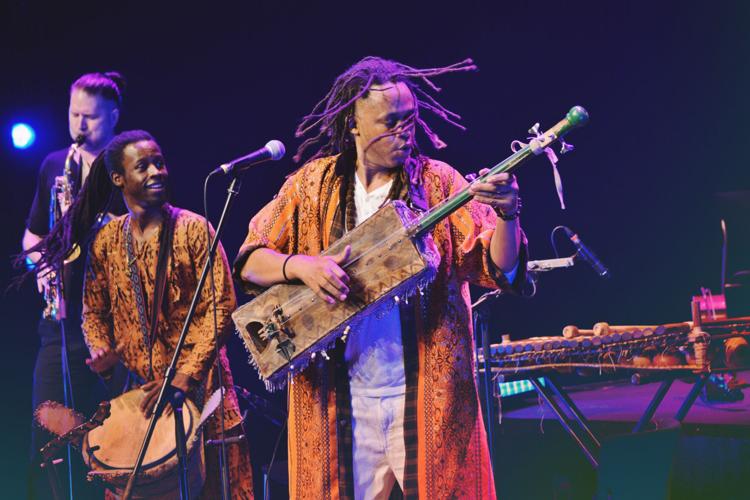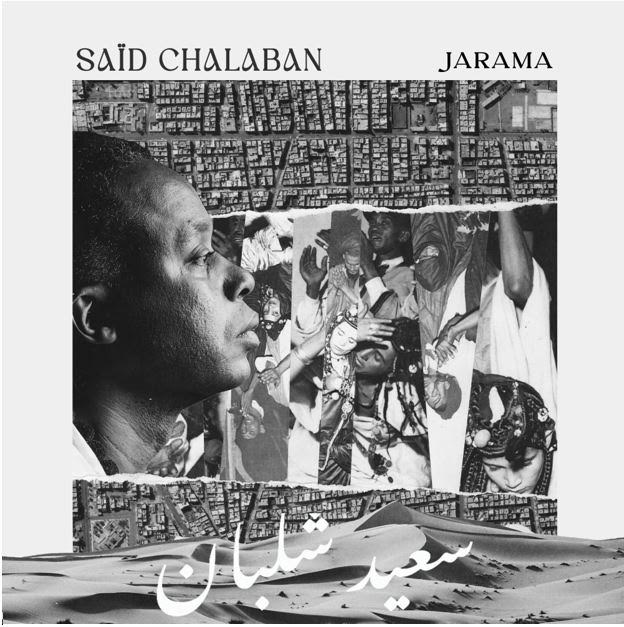Jarama – echoes of the Sahara

The people and the region Tichiti comes from – the strip of Sub-Saharan known as the Sahel – is the area where Bedouin (predominately the Hassani) meets African and even Egyptian cultural heritages. Thus the region is awash with musical influences. The sounds of the descendants of African slaves (Gnawa) mix with the music of the Hassani and the Egyptian working-class music known as shaabi and create a melange that is both fascinating and beautiful.
Tichiti's experience working with amalgamating popular musical styles – funk, jazz and even hip-hop – with traditional music from the African region, combined with his mixed Bedouin and African heritage, make him an ideal vessel for bringing this music to a European audience. However, that doesn't mean it's necessarily always an easy process.
While he might have been born in Guelmim, Morocco – known as the gateway to the Sahara – Tichiti hasn't been there since he left in the 1990s. As Echoes of the Sahara shows, even finding musicians to work with wasn't easy. Yet, despite any problems he and his companions might have experienced, you can visibly see Tichiti drinking in his surroundings and the music.

Culture deeply embedded
He might not live in Morocco any longer, but the Sahara and the culture of its people are still deeply embedded in Tichiti's soul. We discover this upon listening to Jarama. While there are only four songs on this EP, this does not detract from the experience of listening to this amazing fusion of European and Saharan music.
Hassani concerts are described as spaces where new songs and poems are born, implying, like jazz music, that there is a large element of improvisation involved. The songs have no set time signature or theme and the lyrics are created on the spot by poets and songwriters. The similarities with contemporary rap and dance hall music, where MCs create songs on the spot as part of their performance, are striking.
While a recording doesn't offer the same latitude for spontaneity as a live performance, we still hear some of the same organic quality to these songs that we would expect from a live concert. Each of the six musicians: Said Tichiti (vocals, guembri, lute, percussion) Meszaros Adam (guitar) Kaman Andras (keyboard and piano) Kroknay Andras (bass) Krecsmary Zsolt (drums) and guest vocalist Amine Naami, create a sound that is simultaneously tight and loose.
While not completely emulating the improvisational quality of traditional music, the feel is similar. Never losing their rhythm or cohesion, they manage to avoid sounding stilted or formal either. They have located the magic sweet spot that makes it feel they are walking a tightrope musically – where one wrong step would see it all fall apart.
Unique musical tightrope
For the listener, of course, this is part of the thrill and exhilaration. Nobody wants to see a tightrope walker fall, but the danger adds an extra dash of something to the proceedings that keeps us all on the edge of our seats. We listen to this music with the same breathless anticipation as might an audience watching a performer on the high wire, both relieved and excited when they finish a song successfully.
What helps keep the music on track – and by extension the band in harmony – is that it is grounded in the music and rhythms Tichiti picked up and performed when he was in Morocco. No matter what flourishes or embellishments decorate a tune, the core remains solid. While the influence of traditional music may not always be obvious, it is what carries the music forward.
Listen to the first song on the disc, the title song "Jarama". It opens with Tichiti's voice singing in what sounds like a prayer. The musical underlay is a mixture of electronic sounds and steady percussion, with Tichiti's lute adding delicately phrased notes to fill out the sound.
As with other music from the Saharan region, this song has a trance-like quality. That said, it is less hypnotic than desert blues and more conducive to introspection and contemplation. The vocal focus allows the voices to ring out beautifully. As Jarama can mean 'thank you', the strength of the vocals makes this feel like a genuine expression of gratitude.
The final track, "Fulani" (one of West Africa's largest ethnic groups – a nomadic pastoral people) is about the attachment the Gnawas feel towards their sub-Saharan ancestors. Having been brought to Morocco as slaves, people of Gnawa descent look back to the Fulani as the source of their culture and traditions.
With this song Tichiti and his bandmates have created a piece of music that reflects his mixed Gnawa and Arabic descent, while also incorporating elements from contemporary European music. While this might have the potential to descend into something muddy and confusing, the track is a perfect example of the band's ability to walk their unique musical tightrope.
Each musical style assumes a distinct strand within the body of the song. While they are introduced individually they are gradually woven together to make up the whole. The pieces are put together so seamlessly the listener doesn't even notice. The glorious thing about this album is while we know the band combines elements from a variety of musical traditions to create their songs, all we hear is the final harmonious result.
Jarama is a stunning collection of songs from a band of extremely gifted musicians. If you've not heard Chalaban before, this is a great introduction to their work.
© Qantara.de 2024